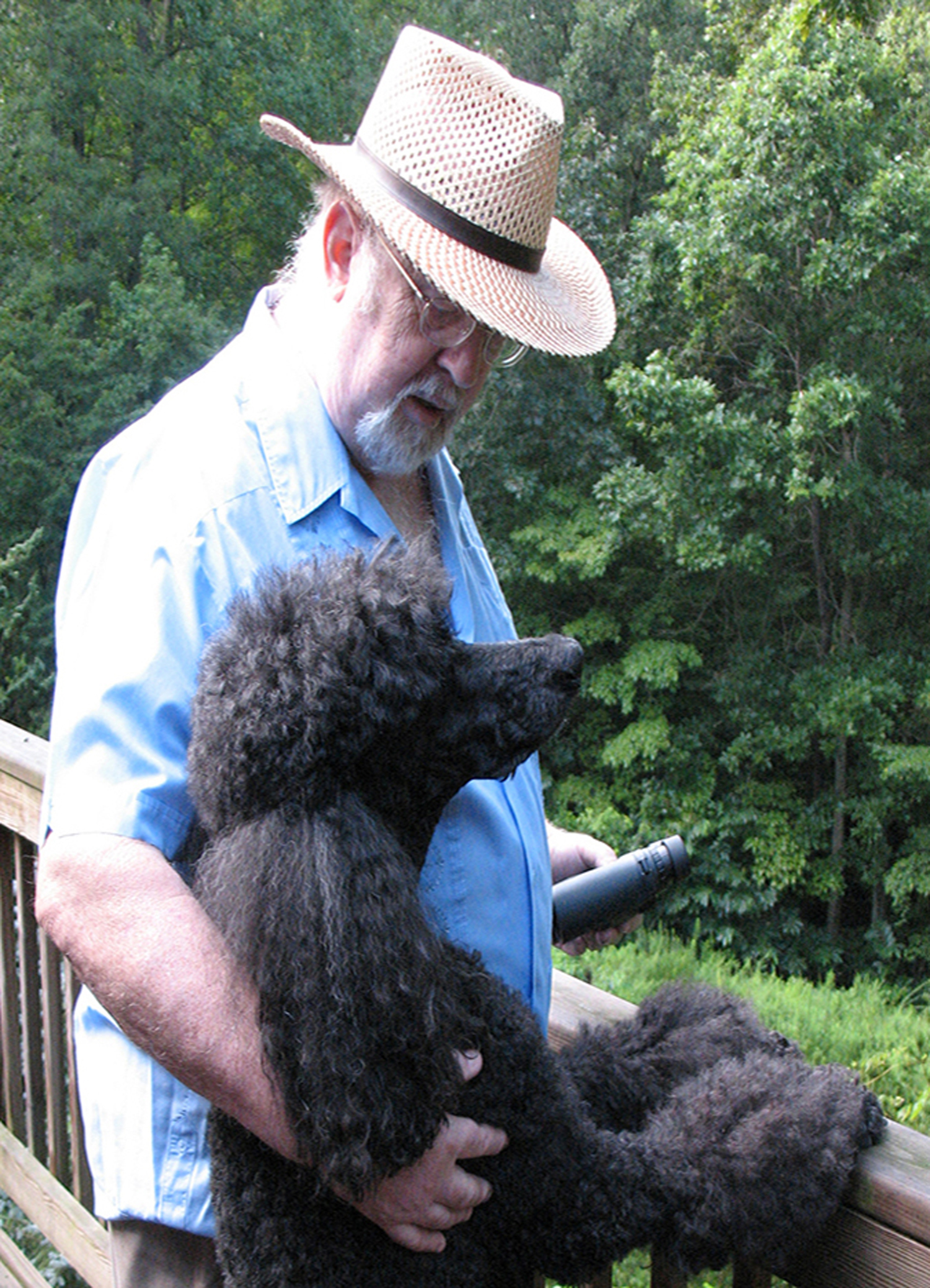Jon Franklin (1942–2024)

Jon Franklin and Sam
My teacher, mentor and friend for more than 30 years died this week.
Jon Franklin was 82.
He is rightly remembered for his accomplishments in journalism.
This is how the Washington Post remembered him.
And Oregon Arts Watch, written by Brett Campbell. Brett and I were Jon’s students at the University of Oregon in the first year of a collaboration between the journalism school and the creative writing program:
And this is the obituary written by one of his best students, Anne Saker.
And here are some of my thoughts:
Jon Franklin used the narrative structures and techniques of fiction to tell stories plucked from the science beat that were so unusual for the pages of a daily newspaper that the Pulitzer Prize folks had to invent not one, but two new categories to honor them: feature writing and explanatory journalism. He won the first Pulitzer in both categories.
He wrote about science, but his true subject was the human condition. Our stubborn species never tires of reading about what our fellow creatures are getting up to. We feel less lonely and more courageous when we share in others’ struggles and triumphs. Even when struggles end in defeat, a writer of Jon’s stature and vision can reveal something meaningful about ourselves we had never considered, or perhaps forgotten in the blur of daily life.
Jon Franklin fused the modern discipline of journalism with the ancient magic of storytelling to create a new literary genre capable of bridging the gap between the sciences and the humanities that has long divided mainstream culture.
His nonfiction short stories, dramatic essays and books described how discoveries in medicine and brain science shape our understanding of ourselves and our place in a bewildering natural world. He won the first ever Pulitzer Prizes for both feature writing (1979) and explanatory journalism (1985), inaugurating a new era of compelling narrative journalism and science writing.
Then he made the magic explicit, teaching generations of novice writers how to bring true, rigorously reported stories to life using time-honored literary structures and techniques that keep readers wanting to know what happens next.
He understood that he couldn’t teach the magic’s most important elements: vision and courage. But he assured us, his students and fellow writers, that we were not alone in our fears and doubts. He had struggled in that muck, too. He built a community of writers who sharpened each other’s thinking, inspired each other’s courage, and made the writing life for all of us less lonely.
I took my first undergraduate reporting class from Jon Franklin in 1991 at the University of Oregon, where I also earned a Master of Fine Arts degree in Nonfiction under Franklin’s guidance in 1996. We stayed in touch over the years and he helped me with a few stories. As my interest in the intersection of cognitive neuroscience and education grew, he recommended the Knight Science Journalism Fellowship at MIT to me, and he recommended me to the program.
We spent many hours over the last few years talking about the book I wanted to write about the new science of teaching that I began to research during my year at MIT.
He read many drafts and encouraged me to see and understand why this new science matters in this cultural moment when our nation and our world are so divided by education. This new science reveals that although education is driving us apart, there exists at the heart of education an ancient bond that has always drawn us together.
We all teach and we learn from teaching, which are natural capacities, like walking and talking, that draw our minds together in a bond between individuals and between generations. This teaching bond makes culture, society, civilization, education and history itself possible.
We’ve always taken this bond for granted, but we’ve stretched the teaching bond thin, loading more weight on it without knowing its limits. To understand the forces driving us apart, we must understand the elemental force of the teaching bond that made us human in the first place.
I never took Jon Franklin for granted. The more I thought about the bond that draws students and teachers closer to each other, the more I thought about our relationship. I’m too close to it now, too troubled by grief to express my loss.
We have a limited vocabulary to describe this most basic human connection, which is like the bond between a parent and child, but it is different. It’s like friendship, but it’s different. There is a vulnerability to opening one’s mind to a teacher and for a teacher to open one’s mind to a student. It requires great trust and the willingness to see the world from someone else’s perspective.
Theodore Roethke, a legendary teacher of poets, described teaching as one of the “central mysteries, in spite of its great body of unessential lore.”
“One teaches out of love,” Roethke says in his prodigious notebooks. “It’s an impertinence, an imposition, in the end it’s terrifying.”
This much I can say: The terror goes both ways. So does the love, even when words fail.
Everyone should be so lucky.
I regret that I was not able to finish my book before Jon Franklin died, but his fingerprints will be all over it when it is complete.
